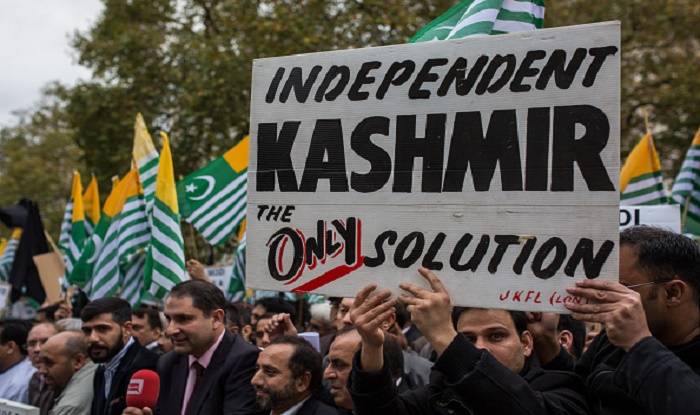World has speculated, it has been horrified and it has witnessed India and Pakistan reaching at each other’s throats throughout the history of their existence as neighbors, solely for the dispute over the scenic Valley near the Himalayan mountain ranges, the Valley of Kashmir. The conflict still lingers, at times it has lurked in shadow as backburner, other times it has triggered violent confrontation and the infamous rivalry of India and Pakistan. The year that has gone by will be remembered for reigniting the tensions inside the Indian-occupied Kashmir, which resultantly intensified aggression between the two neighbors. From the United Nations General Assembly one-on-one between Prime Minister Nawaz Sharif and Prime Minister Narendra Modi, to Pakistan’s Ambassador to United Nations Maleeha Lodhi’s strong reply to Indian Minister for External Affairs Sushma Swaraj, it was a year full of political upturns. However, the political face off was swiftly shifted to cultural and social onslaught when Indian Hindu fundamentalism took to the front, and vehemently declared a ban on Pakistani artists working in showbiz in India, which highlighted the depth of Hindu fanaticism clawed into the social fabric of Indian society. The Indian allegations of Pakistan’s incitement of Kashmiri uprisings, and subsequent attack on an Army camp in Uri paved the way for an all time low in the Indo-Pakistan equation. It was met with the debatable and questionable “surgical strike” phenomena which seem to have fancied and fan-girled Indian people to a great degree.
As a matter of fact, India has emerged to become a rapidly radicalizing society, where television news shows broadcast feed on the mounting tensions, provoke their audience to endorse hate speech and war mongering, to the Bollywood industry out of its fear of Hindu fanatics boycotting cultural exchange with neighboring Pakistan. The Indian strategy to suppress the demand of Kashmiri people has shown multiple colors and has adopted many shapes; however, military action still finds its way through the non-military strategies India has utilized to counter the Kashmiri freedom struggle, which lays bare the conviction, the earnestness that the Kashmiri sentiments of liberation beholds in the face of seven decades of suppression.
On a personal note, I still remember my grandfather narrating me stories of their visit to Srinagar during their early days of marriage, unarguably an ideal romantic place for a newly wedded couple. The beauty of Kashmir’s Dal Lake with curtain-covered tourist boats offering boat-rides was always his favorite part to describe. I still recall his gleaming eyes reflecting memories of his eight years summer time vacationing in Srinagar.
The most interesting, and the most fearful, of the twists have entered the Indo-Pakistan equation with the entrance of unpredictability into the White House this year. The unpredictability of the Trump presidency, his immediate immigration ban on Muslims and his explicit call to associate his fight against terrorism with fight against Islam, affirms an expected change in foreign policy towards South Asia, and more prominently the two nuclear rivals. The noticeable domination of Indian narrative in the Capitol Hill and Congress circles reinstates that Pakistan is expected to have a rough ride with the new Republican administration in the White House. Donald Trump’s departure from America’s traditional and constitutional practices would be a challenge for the foreign policy endeavors he will undertake, especially with Muslim-specific influence over his policies; there is an evident downslide for the question of Kashmiri freedom struggle. During Indo-Pakistan confrontational moments, the United States has remained a silent spectator or other times, Washington D.C. has issued official statements leaving the matter for bilateral engagement. However, with the new, “unpredictable” and “unusual” administration in the Washington, the likelihood of a change in policy is high.
With two of the Indian members already inducted into the Trump’s administration and one of the largest expatriate community in United States, Indian influence in American politics has saved it while human rights violations in Kashmir had been rampant, pellet guns were being used on children and massive anti-India protests were ongoing. Ajit Pai, is a senior level Indian American in Trump’s administration, following Nikki Haley, nominated US ambassador to UN (a cabinet-rank position); Seema Verma, head of medicare and medicaid; and Preet Bharara, US attorney for the southern District of New York.
Nonetheless, the existence of Kashmir Valley as a disputed land cannot be brushed away; the Line of Control between the Indian occupied Jammu & Kashmir and Pakistan’s Azad Kashmir is still a non-permanent border, internationally recognized disputed territory, to which end United Nations has already passed resolutions for India to hold to a plebiscite. The multiple unresolved disputes, especially Kashmir, the likelihood of terrorist incidents and a nuclear threat triggered through military environment, have made the India-Pakistan deadlock the only greatest danger to international peace and security. New Delhi’s submission for domineering power status could be hurriedly compromised if another war broke out, by plan or mistake, with Pakistan.
Nevertheless, the Kashmiri freedom struggle has surpassed worse and rejoiced its identity when speculations of its lost motivations became popular. It has survived through generations, and Kashmir has redefined the phrase: “what doesn’t break you makes you stronger”.






